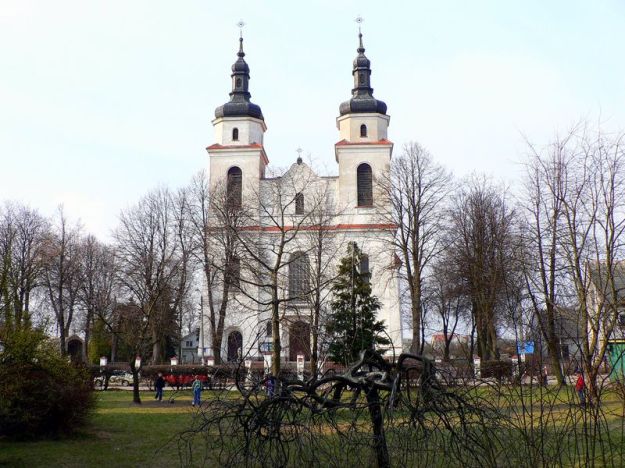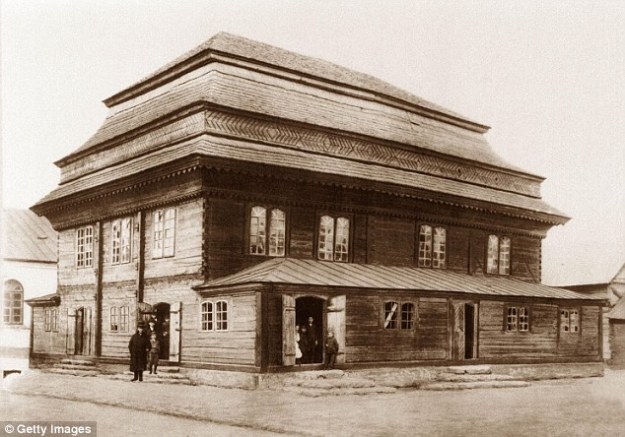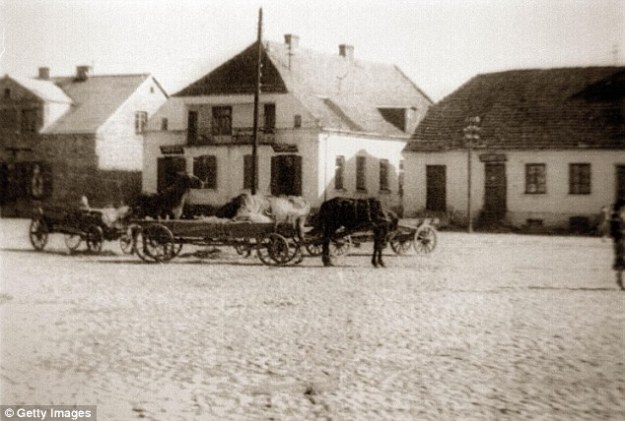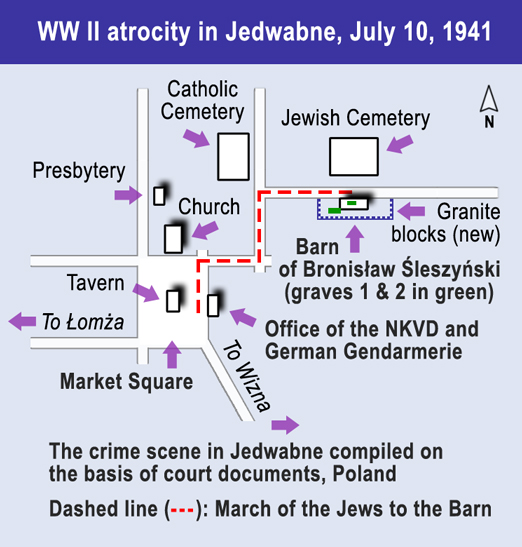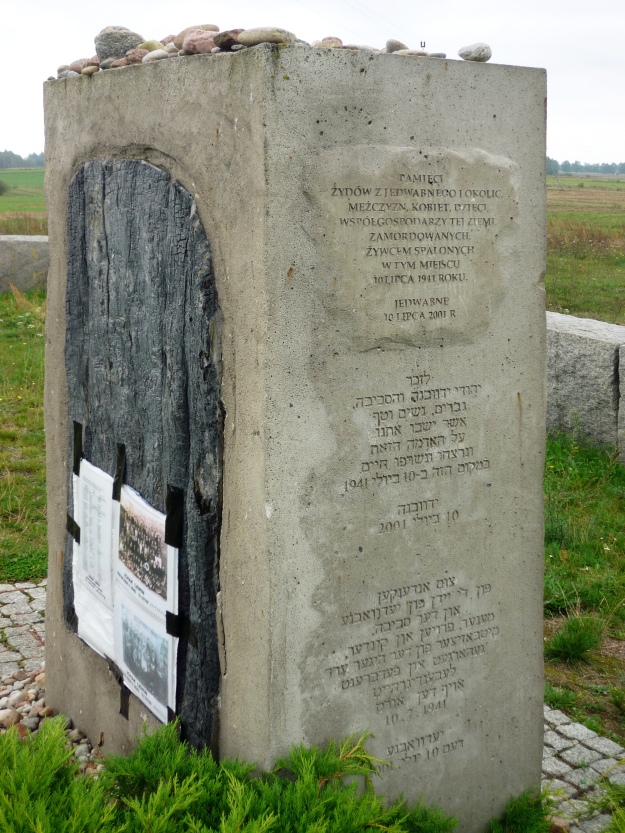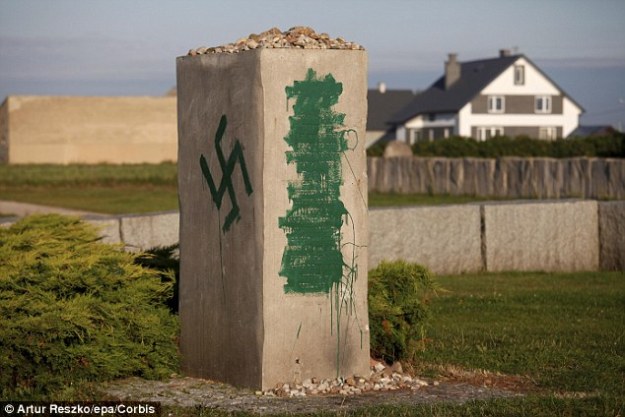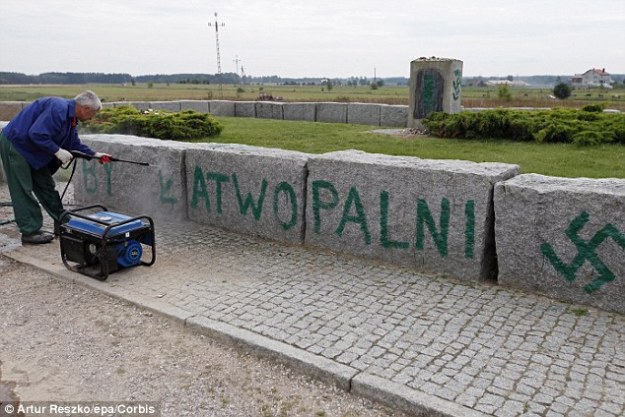About Jedwabne
Jedwabne is not one of those places you’ve heard of. Its first appearance in the records was in 1455 but it was not until 17 July 1736 that it received city rights, including the privilege to hold weekly markets on Sundays and five country fairs a year.
A wooden Catholic church with two steeples was built in 1737-1738, and a synagogue around 1770. That synagogue was a particularly fine example of Polish Jewish wooden synagogue architecture.
By the end of C18 the town was already known for its textiles – the name means “silk” – and by 1851 there were perhaps as many as 17 weaving establishments. By 1862 11 mechanical and 13 manual weaving machines had been installed at Jedwabne. Post 1863, due to Russian repression against Polish and Jewish entrepreneurs, the town’s cloth production fell into decline.
The town was the center of a large Jewish community. By 1940 its population stood at 3,985 – 3,670 Poles, 250 Jews and 65 Belarusians.
Eastern Poland had been invaded by the USSR in 1939 and Jedwabne was transferred by Germany to the Soviets on 28 September 1939. The Soviet secret police were active between 1939 and 1941 against Polish partisans and the general population. A number of Polish families were rounded up and deported to Siberia. Initially, unlike the gentile Poles, many Jews welcomed the Soviets and the Red Army as their protectors (as opposed to the Nazis!) as did the local Belarusian population.
Having dismantles the local government, admin jobs were offered to Jews who declared Soviet allegiance – some even joined a Soviet militia, overseeing the deportations organised by the NKVD. A total of 22,353 Poles (entire families) were deported from the vicinity. Armed Jewish militiamen were seen to be guarding those prepared for deportation.
Terror and hardship spread throughout the area as Red Army troops requisitioned food and other goods and the secret police routinely arrested and deported Polish citizens – both gentile and Jewish. Waves of arrests, expulsions and prison executions continued until 20/21 June 1941.
German forces attacked the USSR on 22 June 1941 and quickly overran the part of Poland whch the Soviets had occupied. In Wizna, near Jedwabne, several dozen Jewish men were shot by the invading Germans, with similar shootings in other nearby towns.
Nazi propaganda distributed in the area said that Jews might have supported the Sovkiets in their crimes in Eastern Poland, while the SS organised task forces to murder Jews (and several massacres were carried out). On Heydrich’s orders officers encouraged anti-Jewish incidents and local communities were encouraged to commit anti-Jewish pogroms and robberies with total impunity.
On the morning of 10 July 1941 a group of Polish men from around Jedwabne and neighbouring settlements assembled on the orders of the mayor, Marian Karolak, and the German commander. They set out to round up Jews from the town and local villages and took them to the square in the centre of Jedwabne, where they were ordered to pluck grass, attacked and beaten. The Soviet bust of Lenin was pulled down by about 40 Jews under German orders and the same Jews were ordered to carry the bust out of town while singing Soviet songs. The local rabbi was forced to lead the procession, which was led to an empty barn, killed and buried along with the fragments of the bust. All the remaining Jews (250-300) were taken to the same barn later that day, locked inside and burned alive. German gendarmes shot those who tried to escape from the burning barn.
Exhumations have led to the discovery not only of the charred bodies of the victims in two mass graves, but also of the fragments of the bust of Lenin and bullets.
The next day, according to witness accounts, the Germans created a ghetto in Jedwabne and incarcerated about 100-130 Jews in it. They were shipped to Łomża Ghetto in November 1941, and subsequently sent to the extermination camp at Treblinka.
At least two investigations had tried to ascertain who was responsible for what happened at Jedwabne. In 2000 the Polish government ordered a completely fresh examination of the evidence by the Institute of National Remembrance – Commission for the Prosecution of Crimes against the Polish Nation (IPN). Their findings, published in 2002, were:
- The perpetrators of the crime sensu stricto were Polish inhabitants of Jedwabne and its environs; responsibility for the crime sensu largo could be ascribed to the Germans. IPN found that Poles played a ‘decisive role’ in the massacre, but the massacre was ‘inspired by the Germans’. The massacre was carried out in full view of the Germans, who were armed and had control of the town, and the Germans refused to intervene and halt the killings. IPN wrote: “The presence of German military policemen…..and other uniformed Germans…..was tantamount to consent to, and tolerance of the crime.”
- At least 340 Jewish victims were killed in the pogrom, in two groups of which the first contained 40 to 50 people, and the second group contained about 300. The exact number of victims could not be determined. The (claimed) figure of 1,600 or so victims was “highly unlikely, and was not confirmed in the course of the investigation.”
- “At least forty (Polish) men” were perpetrators of the crime. As for the remainder of Jedwabne’s population, IPN deplored “the passive behaviour of the majority of the town’s population in the face of the crime.” However, IPN’s finding of ‘utter passivity’ shown by the majority of Jedwabne’s population is very different from the claim that “half of the population of the town murdered the other half.” The majority of Jedwabne residents were “utterly passive,” IPN found, and they did not participate in the pogrom.
- A number of witnesses had testified that the Germans drove the group of Jewish victims from Jedwabne’s town square to the barn where they were killed. IPN could neither conclusively prove nor disprove these accounts. “Witness testimonies vary considerably on this question.”
- “A certain group of Jewish people survived” the massacre. Several dozen Jews, or according to several sources approximately one hundred Jews, lived in a ghetto in Jedwabne until (they) were transferred by the Germans to a ghetto in Łomża, and eventually died in Treblinka.
Poland’s then-president Aleksander Kwasniewski apologised for his country’s sins.
Two years ago, a monument marking the spot where the victims died was desecrated by vandals who used green paint to spray the symbols of a swastika as well as the phrases ‘I don’t apologise for Jedwabne’ and ‘they were flammable’.
